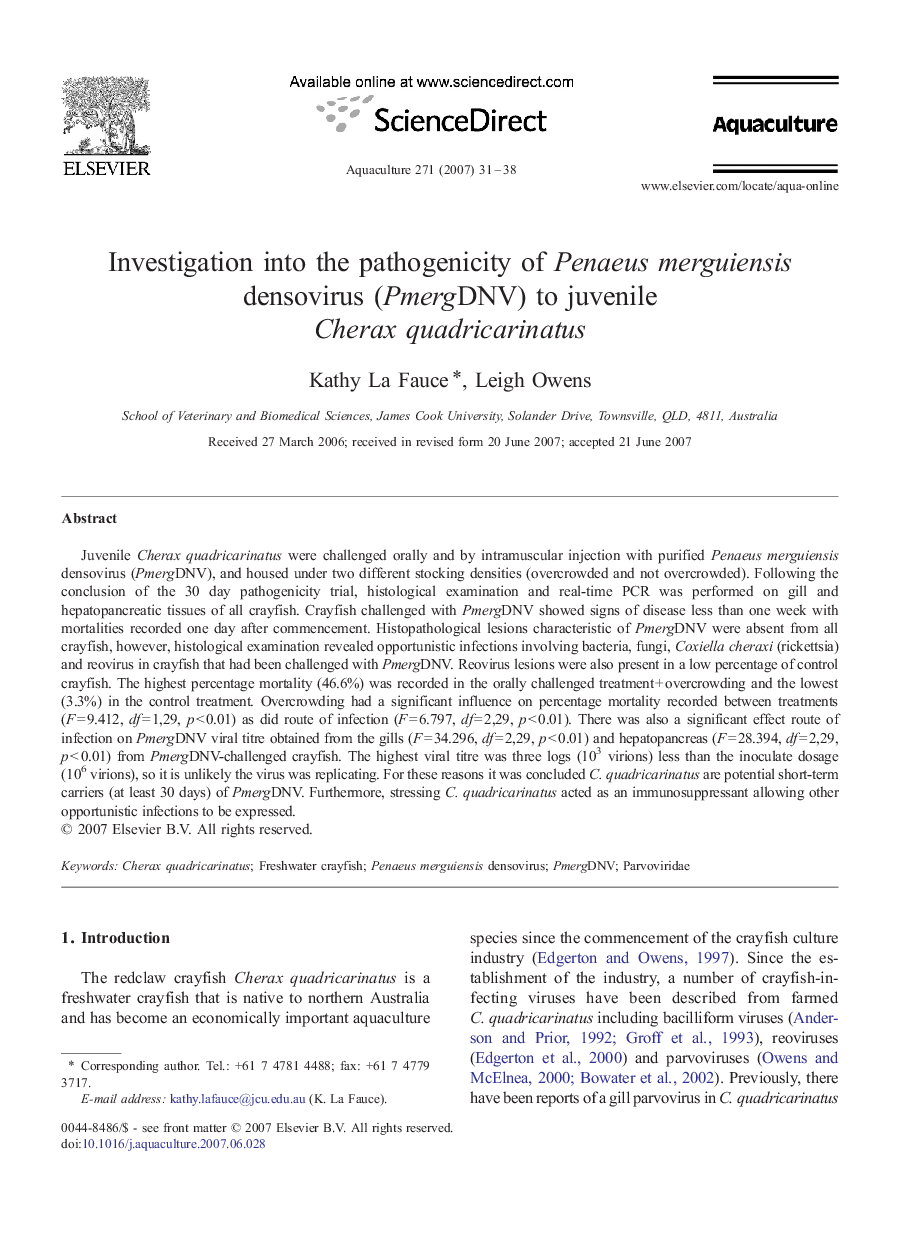| کد مقاله | کد نشریه | سال انتشار | مقاله انگلیسی | نسخه تمام متن |
|---|---|---|---|---|
| 2425126 | 1552971 | 2007 | 8 صفحه PDF | دانلود رایگان |

Juvenile Cherax quadricarinatus were challenged orally and by intramuscular injection with purified Penaeus merguiensis densovirus (PmergDNV), and housed under two different stocking densities (overcrowded and not overcrowded). Following the conclusion of the 30 day pathogenicity trial, histological examination and real-time PCR was performed on gill and hepatopancreatic tissues of all crayfish. Crayfish challenged with PmergDNV showed signs of disease less than one week with mortalities recorded one day after commencement. Histopathological lesions characteristic of PmergDNV were absent from all crayfish, however, histological examination revealed opportunistic infections involving bacteria, fungi, Coxiella cheraxi (rickettsia) and reovirus in crayfish that had been challenged with PmergDNV. Reovirus lesions were also present in a low percentage of control crayfish. The highest percentage mortality (46.6%) was recorded in the orally challenged treatment + overcrowding and the lowest (3.3%) in the control treatment. Overcrowding had a significant influence on percentage mortality recorded between treatments (F = 9.412, df = 1,29, p < 0.01) as did route of infection (F = 6.797, df = 2,29, p < 0.01). There was also a significant effect route of infection on PmergDNV viral titre obtained from the gills (F = 34.296, df = 2,29, p < 0.01) and hepatopancreas (F = 28.394, df = 2,29, p < 0.01) from PmergDNV-challenged crayfish. The highest viral titre was three logs (103 virions) less than the inoculate dosage (106 virions), so it is unlikely the virus was replicating. For these reasons it was concluded C. quadricarinatus are potential short-term carriers (at least 30 days) of PmergDNV. Furthermore, stressing C. quadricarinatus acted as an immunosuppressant allowing other opportunistic infections to be expressed.
Journal: Aquaculture - Volume 271, Issues 1–4, 3 October 2007, Pages 31–38